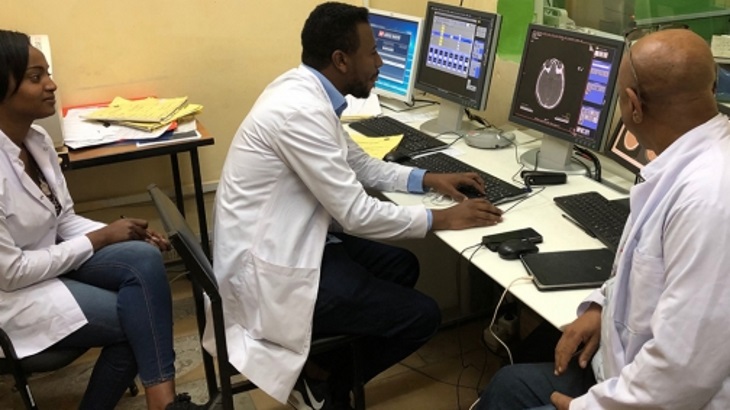Over 67,000 new cancer cases were diagnosed in Ethiopia in 2018, and almost 48, 000 people died from the disease that same year according to the International Agency for Research on Cancer. In line with the global trend, the country’s cancer burden is increasing significantly, the IAEA notes, and by 2040 the number of new cases is expected to more than double.
The government is acquiring new equipment, constructing a new oncology centre in the capital Addis Ababa, and is assigning doctors trained through IAEA fellowships to regional hospitals, where some of the radiotherapy machines will go. One of the country’s two Cobalt-60 radiotherapy machines has been out of service since 2015 in Addis Ababa's Black Lion Hospital due to lack of funding to repair it.
"The key to planning is to make sure that every machine has a maintenance plan - we need to budget more than just the purchase cost," said Wendmagegn Gezahegn, head of St Paul's Hospital in Addis Ababa.
Founded by Emperor Haile Selassie in the 1960s to cater for the poor, St Paul's is the country's second largest hospital and once the current expansion project is completed, it will be the largest, with close to 5000 beds, and fit to treat half a million patients per year. A new wing at the hospital will include an oncology centre with 350 beds and five linear accelerator (Linac) machines and brachytherapy units for cancer treatment, as well as a new cyclotron facility to produce radiopharmaceuticals for diagnosis and treatment of diseases, the IAEA said. The construction of the bunkers that will house the radiotherapy machines for safe operation will begin in the coming months, while the room to hold the cyclotron is already under construction, it added.
In parallel with the construction and procurement of the machines, the country also needs well-trained oncologists, medical physicists and radiology technicians, the IAEA said. Almost all of the Ethiopian Radiation Protection Authority's 40 technical staff, including those in the licensing department, have received training via IAEA fellowships and courses.





_82983.jpg)
_34792.jpg)
_16403_79272.jpg)
_44458.jpg)

_76087_55556.jpg)



